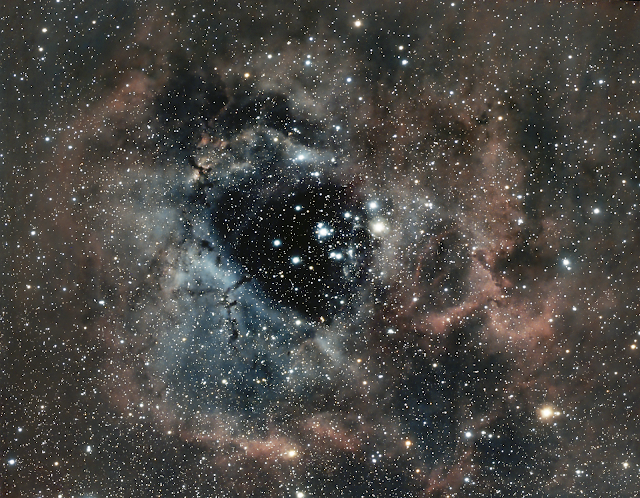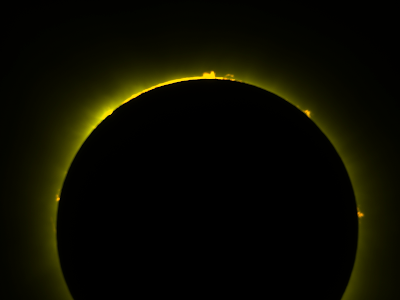Well, it's Labor Day. Summer is officially over and the fall semester has begun. I got in a lot of telescope time over the summer, so I thought I would post a few of my favorite images taken during my break.
Comet 3I/ATLAS, the third ever interstellar object known to pass through our Solar System was discovered in early July. It is faint, but the Unistellar / SETI Institute citizen science program was interested in seeing if people could detect it with their telescopes.
The image above shows 3I/ATLAS (circled). The individual frames were aligned on the comet, which means that the stars in the image appear as streaks. At that time the comet was about 17th magnitude, (translation: very faint!) but detectable. I am happy to be contributing to the science being collected on this mysterious visitor which, despite some claims, is indeed just a comet.
Of course, I continue to image some celestial objects just because they look pretty. Probably my favorite of the summer was this beautiful mix of stars, gas and dust known as the Elephant Trunk Nebula.
It is located some 2,400 light years away in the direction of the constellation of Cepheus, the King. Like many nebulae, it is a region of space where new stars are forming. This was a 2-hour exposure taken with my Celestron Origin telescope. I honestly never imagined that I would someday be able to take images like this one and the others below, but I am happy to be living in the age of the smart telescope.Much farther afield is the spiral galaxy known as Messier 33.
This is a 2-hour exposure of M33 which, at a distance of 2.7 million light years, is the second closest spiral galaxy to our Milky Way Galaxy. It is a galaxy that always challenged me when I tried to see it visually with a traditional telescope, so being able to capture it this way is wonderful.Earlier in the summer I posted images of other nebulae, one of which was the fabulous Lagoon Nebula in Sagittarius. After further review, I thought that maybe the image I posted there, which was a 1-hour exposure, was perhaps overexposed. So, I decided to try something much shorter and I am even happier with the result.
This image was just a 2-minute exposure! Even with this short exposure the nebula still reveals brilliant color, dark globules of dust and the young star cluster that has formed from the nebula.Just last night I pointed my Origin telescope at NGC 6729, a target that was new to me. It is located so far south that it never gets even 20-degrees above my horizon. Still, I managed to get a 70-minute exposure and am happy with how it came out.
What you are seeing here are some stars that are embedded within opaque clouds of gas and just. A pair of bright, young stars are shining forth just above center while other fainter ones struggle to be seen at all. The nebula very much reminds me of the much more famous Messier 78.
At practically the other end of the sky is the more famous Bubble Nebula (NGC 7635):
The bubble at the center of the image is not a thin film of soapy water but rather of gas that has been blown off a massive supergiant star located thousands of light years away in the direction of the constellation of Cassiopeia, the Queen. Some day this star will explode forming a supernova.Ten to twenty thousand of years ago there was a supernova explosion in the constellation of Cygnus, the Swan. It produced the Veil Nebula (a part of which is in my nebula post linked above), which is just a piece of the much larger supernova remnant known as the Cygnus Loop.
The Cygnus Loop is about five full moons across, which means it is much, much larger than the field of view in my Origin telescope. Yet, I decided I wanted to capture it all. To do so I had to make a mosaic of 15 images. Here it is:
 |
To me, it resembles a bubble that has just burst, but it is an expanding cloud of 'star guts' from the supernova explosion.
I mentioned the size of the nebula above, but wanted to illustrate that with a correctly scaled image of the full Moon, so here it is:
 |




















































